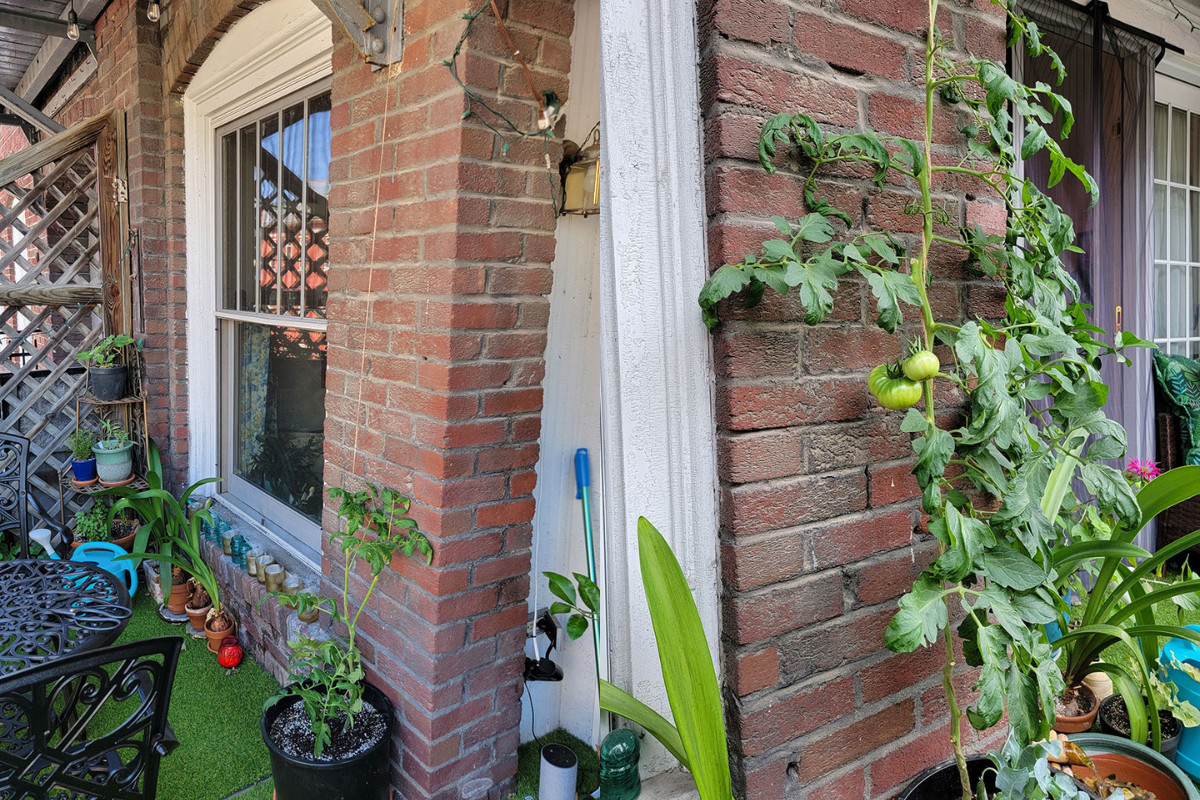
It appears we can thank the French for taking the headache out of growing indeterminate tomatoes. I’ve expressed my annoyance with their annual habit of taking over the garden at length.
Er, the tomatoes, not the French.
But this method has completely changed my mind. Espalier tomatoes are the only way to go in my book.
If you’re unfamiliar with the term, it’s a French word derived from the Italian word spalliera, which loosely translated means “something to rest the shoulder against.” (Not confusing at all, right?) Generally, it’s the name of the practice of training fruit trees to grow flat against a wall.

Aside from the exquisite beauty of this type of orchard, they’re also quite practical, as it’s much easier to pick the resulting fruit. You encourage the tree to grow from side to side rather than taller. This takes quite a bit of planning and effort for an orchard, but applying it to indeterminate tomato varieties is easy, quick and brilliant.
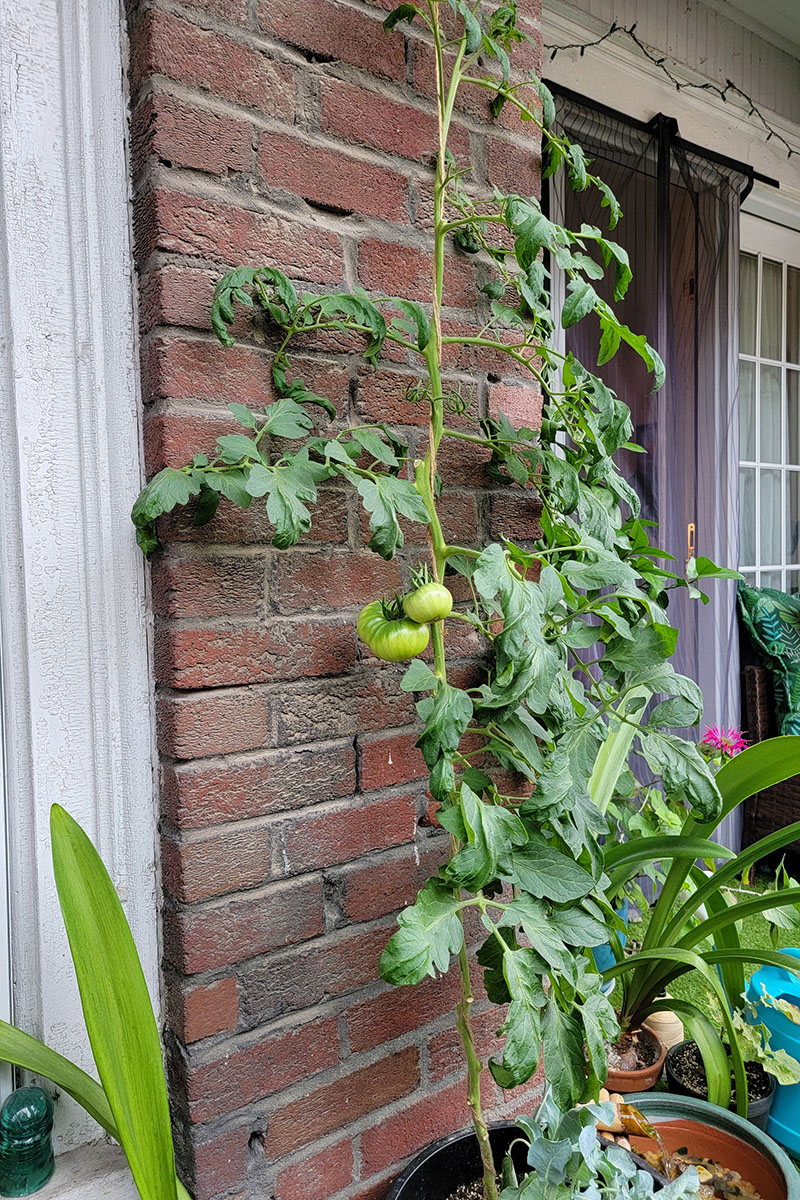
(I also set my cauliflower transplants in my tomato pot to drain.)
A note about tomato varieties
Tomatoes come in two varieties.
Determinate, which reach a set height and generally put on all their fruit at once before dying back for the season. Determinate tomatoes have a bushy growth habit and are much easier to keep under control.
Indeterminate, which grows as a vine rather than a bush, will continue to grow throughout the season. Usually, the only thing that inevitably stops it is a good, hard frost. Indeterminate tomatoes will continue to produce new fruit as long as the plant is alive. Many heirlooms are indeterminate.
The method we’re discussing today only works for the indeterminate varieties, as its vining nature is key.
Staking Tomatoes
There are dozens of ways to stake tomatoes – cages, the Florida weave, squares, etc. They all kind of stink. Inevitably indeterminate tomatoes will outgrow all of these. It requires hefty pruning and staying on top of the growth to prevent them from taking over. That is, until now.
Espaliered Tomatoes
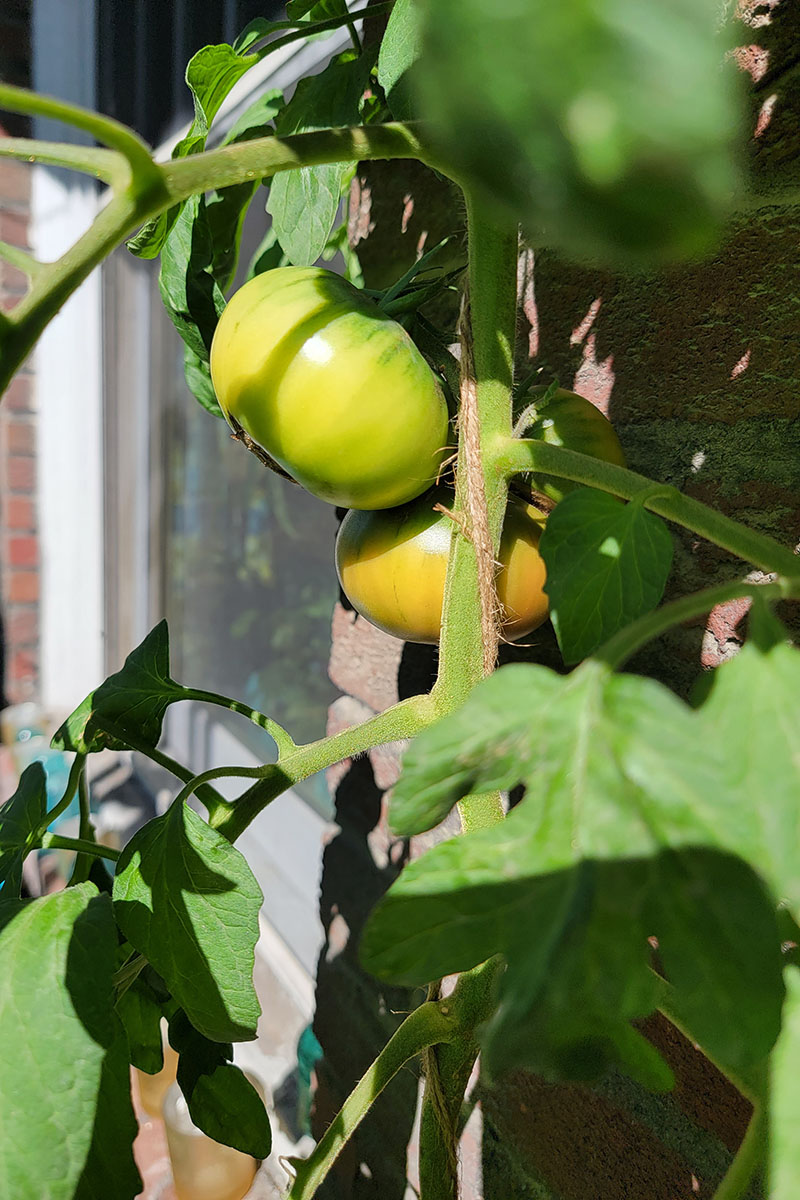
Using the same principle to grow fruit trees along a wall, we can grow indeterminate tomatoes that will produce beautiful, easy-to-reach fruit on a long vine that’s easy to maintain. We’re simply going to take advantage of the vining habit of this type of tomato.
The best part is you can grow tomatoes using this method in your garden and containers. It’s incredibly versatile. I grew the one photographed throughout this piece on my balcony last year. It was still putting out tomatoes in October.
Training Your Tomatoes
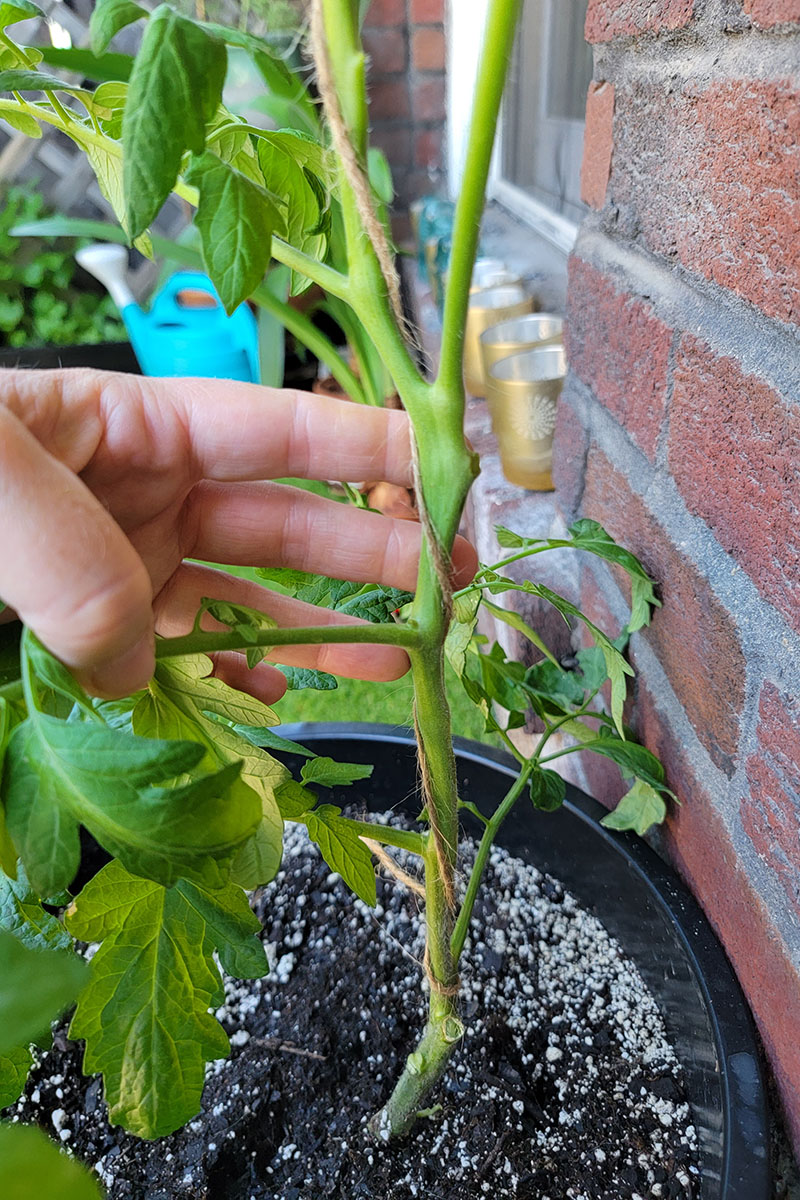
The most important aspect of growing tomatoes this way is how you train them. Instead of letting the plant grow in every direction, you’re going to prune it back to a single vine. Rather than letting the plant get large and unruly, we’re training them to grow long and tidy.
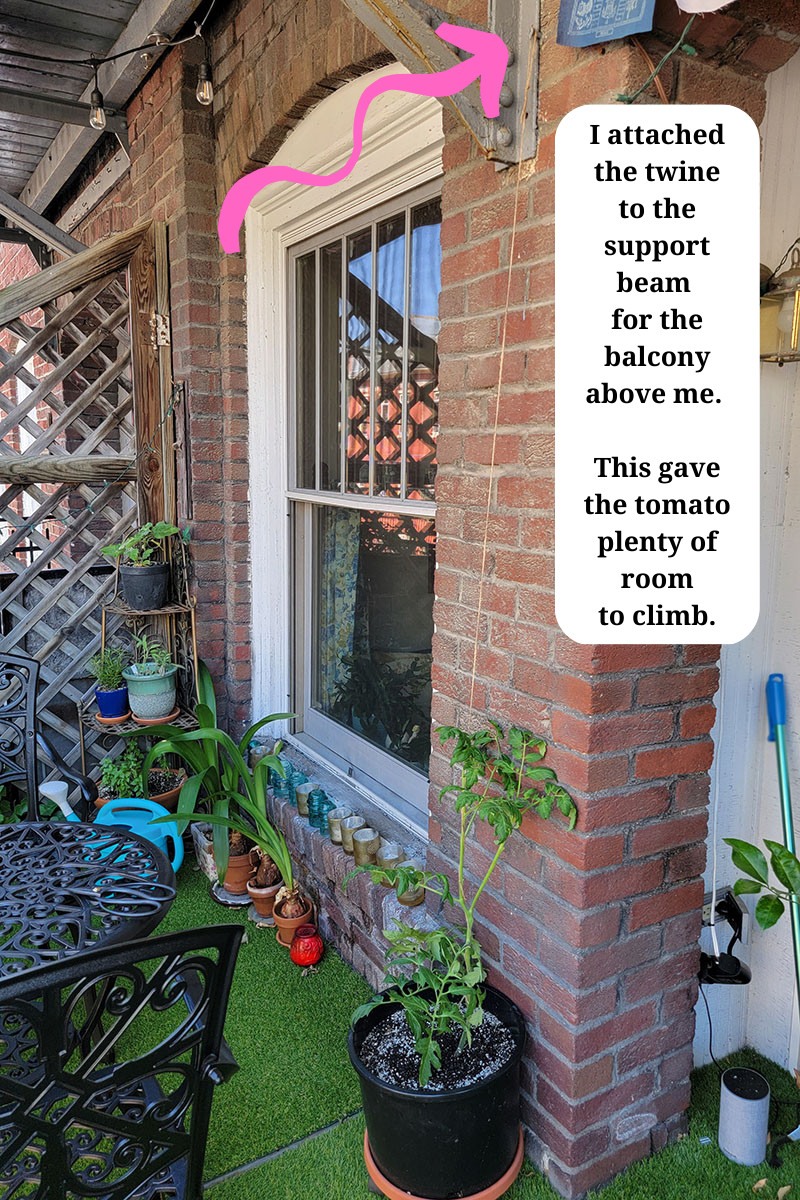
You’ll train this single vine to grow up a piece of twine suspended above the tomato and secured in the soil with a landscape staple or even around the base of the tomato. Similarly, you can train it to grow sideways along a garden fence, railing or other horizontal structure.
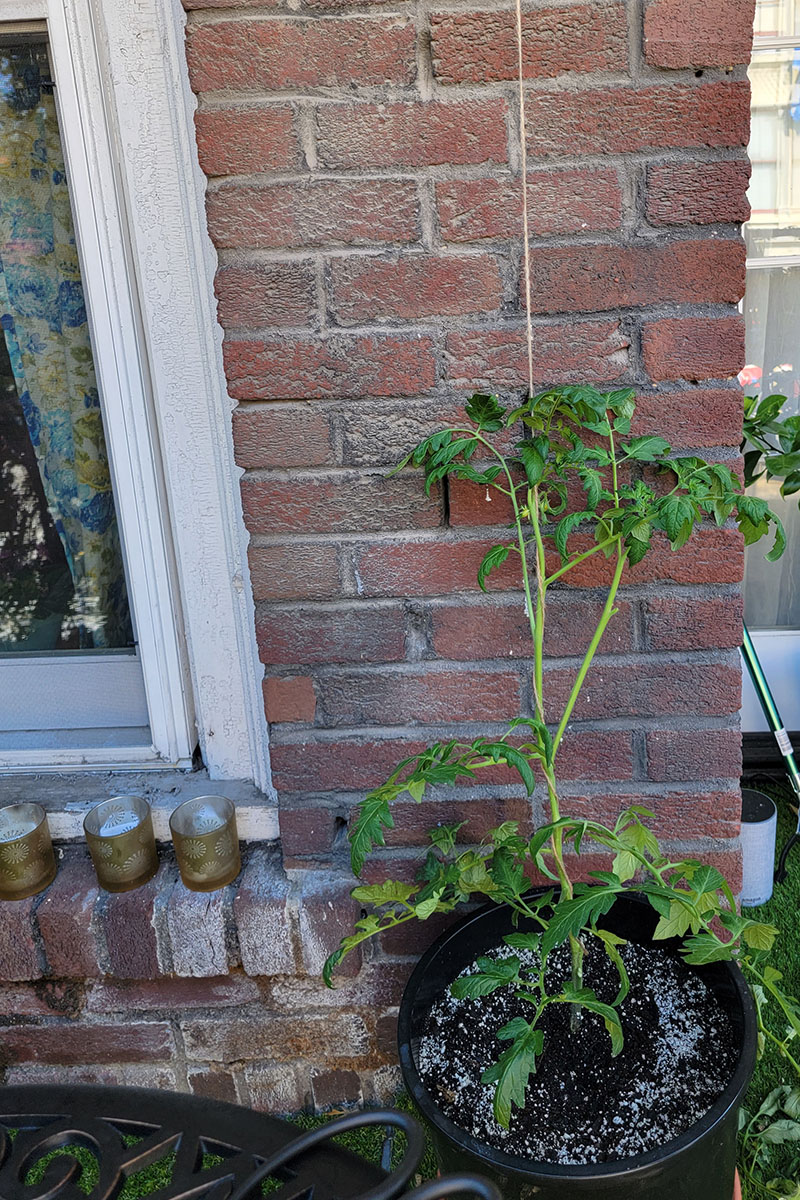
To train the plant, you simply wrap the new growth around the string starting when the plant reaches 18”. Or, if you’re growing horizontally, tie the new growth to the fence (or whatever horizontal structure you’re growing it along). An old t-shirt cut into strips is perfect for this. I would advise letting the plant reach the top of the fence first before detouring to grow horizontally.
As you train the direction of your plant, you’ll also snip off any new suckers or large stems that would cause the plant to branch off in another direction.
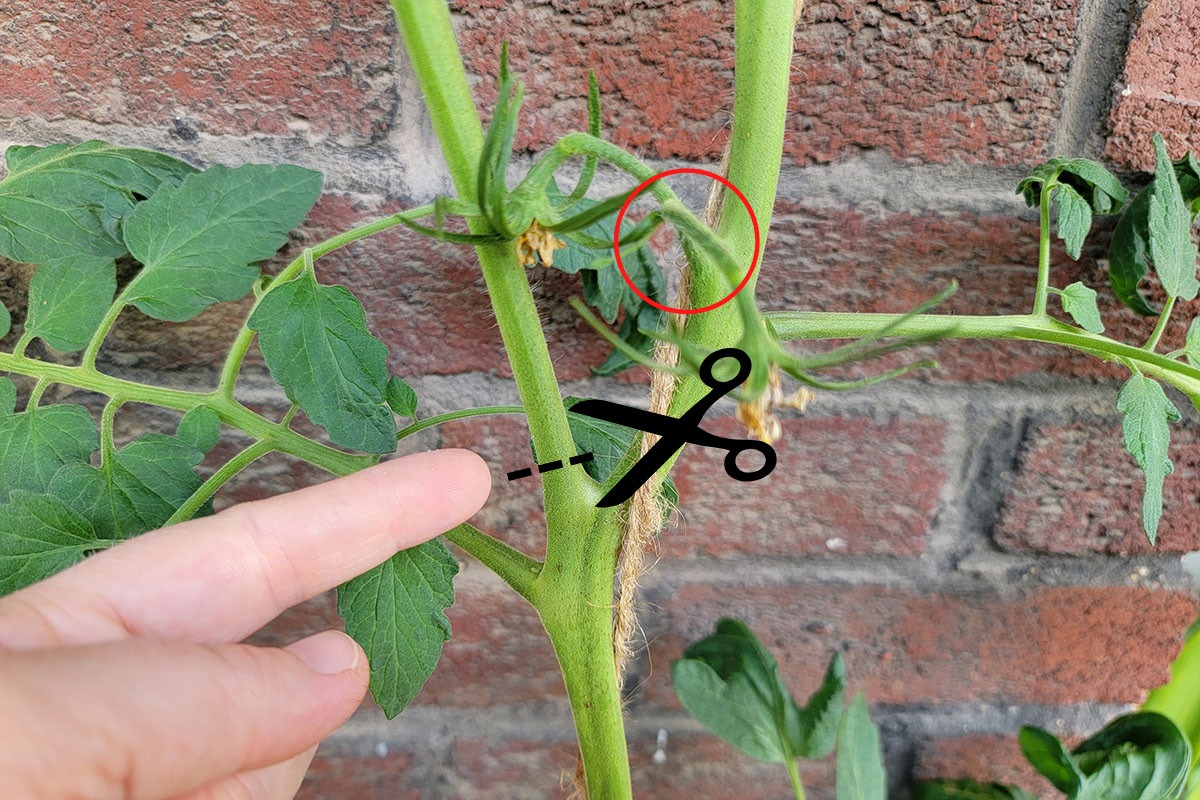
I chopped it off to prevent another large stem from forming.
Remember, we’re growing a single tomato stem.
If you’re going vertical, and the tomato grows to the top of your string, stop training it upward. Once it reaches this point, let the vine waterfall down and continue to prune as before. The only difference is you are no longer training it around the string but rather letting it grow free back down to the ground.
Benefits of Growing Tomatoes This Way
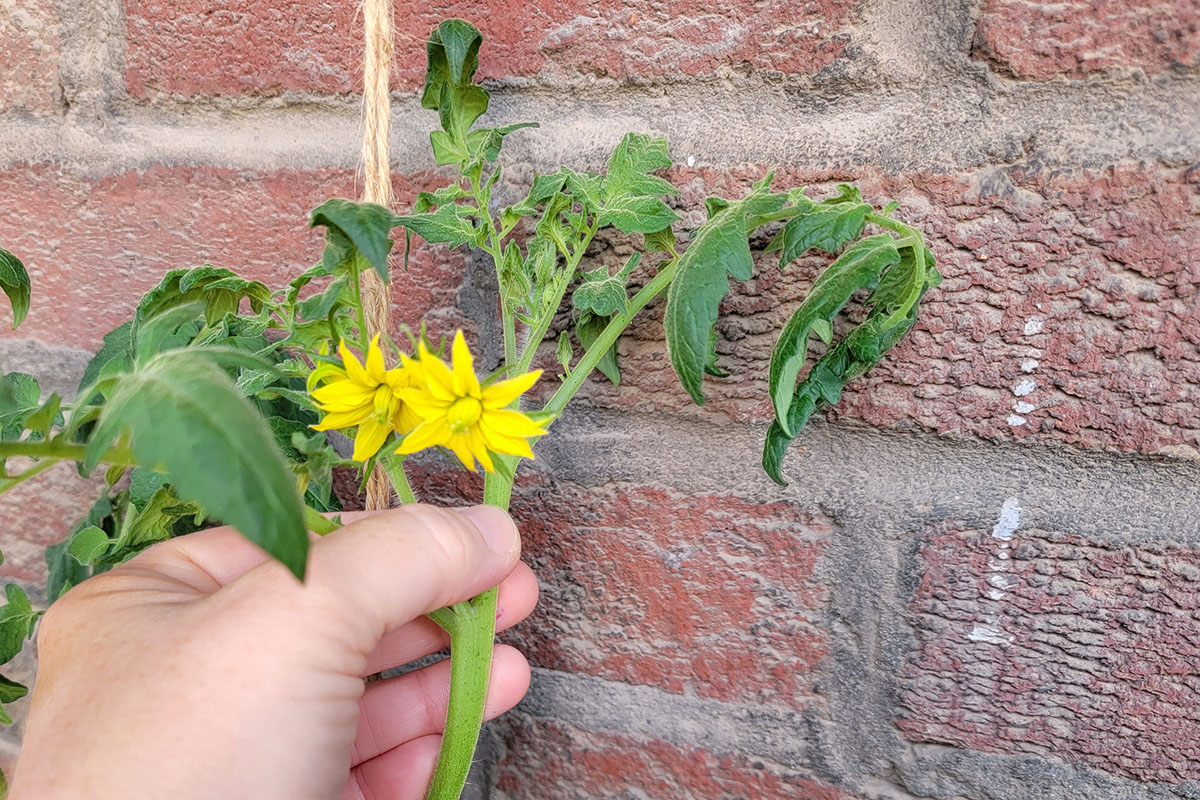
- Everything about this method is so much easier than wrestling your unwieldy tomato plants into a cage of some sort.
- Since you’re limiting growth to one stem, the plant can direct more energy into fruit production.
- You’ll be able to see every flower, so you can hand-pollinate each one to ensure you get every tomato possible.
- Because you’re growing up or sideways, the tomatoes don’t take up as much space in your garden.
- Harvesting tomatoes is super easy; they’re easy to spot, no more digging through cavernous tomato plants.
- The excellent airflow makes it nearly impossible for disease to take hold.
- Any pest problems are much easier to spot and treat, meaning you find them before they become a problem.
- Tomatoes are exposed to more warm air and sun, which allows them to ripen quicker.
- There’s no hacking back a massive tomato plant creeping into every part of your garden come midsummer.
- At the end of the season, cut the twine and plant at the base. Compost the whole thing. So easy.
A Handful of Tips
- If you’re growing in a container, plant the tomato closer to the side rather than the middle; that way, you can get the plant as close as possible to the structure it will be climbing.
- Use good sturdy garden twine and double it up. The last thing you want is your twine snapping when your plant is loaded with tomatoes in August.
- I found I only needed to check on the tomato once a week to remove suckers and wrap new growth around the string.
- If you aren’t sure about what a bit of new growth is doing, whether it will produce a flower or more leaves, let it go until you can be sure, and then come back and trim it if need be.
- Because they take up so much less space on the ground, you can grow more tomato plants in the same space. Bring on all the heirlooms!
- By the way, this is how most commercially grown tomatoes are grown.
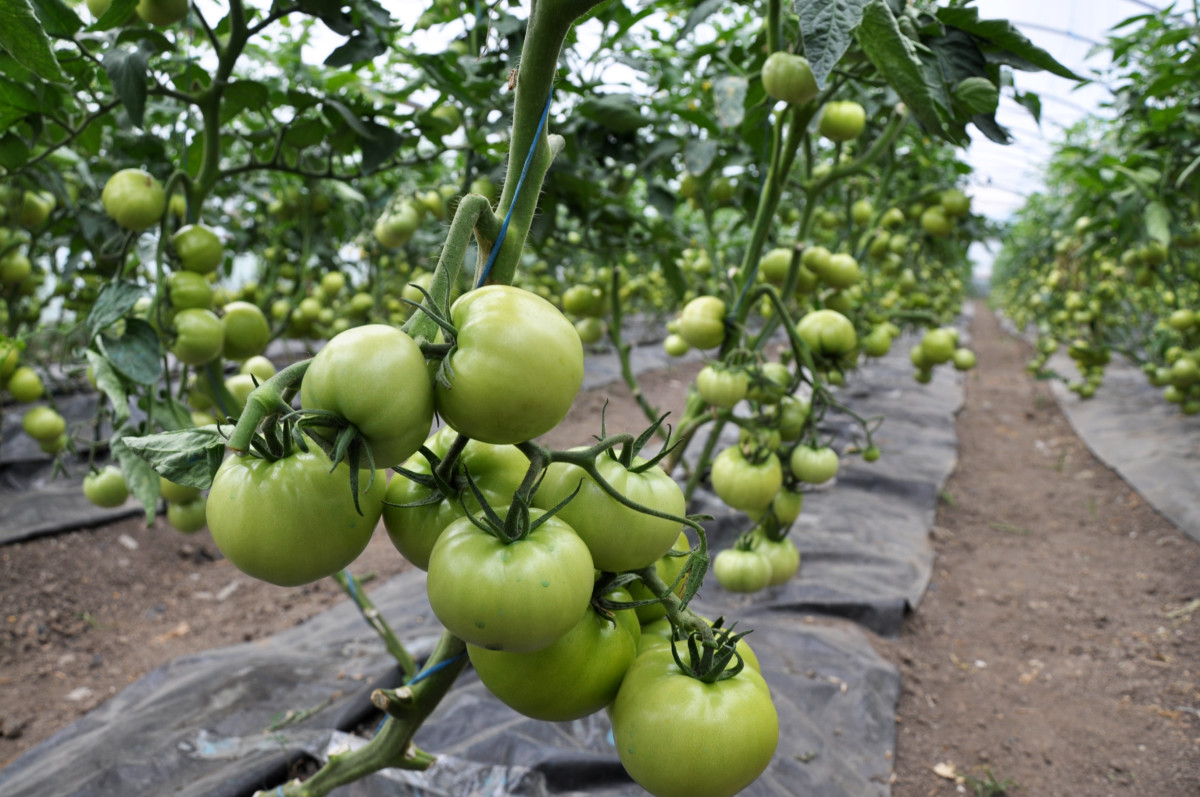
And that’s that, my friends. This is hands down the only way I will grow indeterminate tomatoes for the rest of my life.

Get the famous Rural Sprout newsletter delivered to your inbox.
Join the 50,000+ gardeners who get timely gardening tutorials, tips and tasks delivered direct to their inbox.

